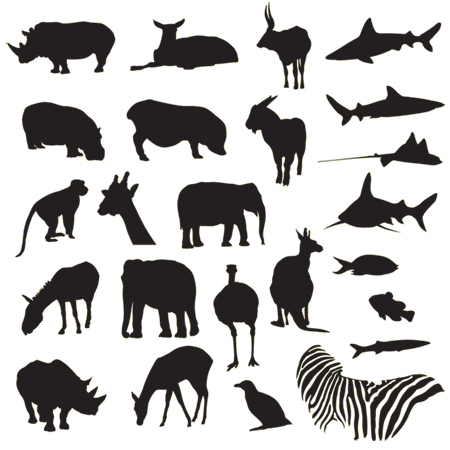I have named this blog Thinking Animals because it encapsulates our activity here – thinking about animals, thinking about thinking about animals, and thinking as (human) animals. On an unimaginably massive scale, humans use animals everyday – as commodities, laborers, test subjects, food, companions, clothing, spectacles and symbols – in the intimate and industrial economic, scientific, and social processes that create and define modern human life. However, within the (sub)urban environments most Americans live, the omnipresence of animals is regularly hidden and disavowed. Indeed, the human species’ own biological status is frequently ignored, or even disputed. My goal is to subvert this trend by promoting awareness of and critical reflection on common human belief systems and practices regarding other animals.
My approach will be twofold – exposition and dialogue. By presenting media and information that engages with the various subjects of animal studies along with critical analysis and open-ended questions, I hope to engage my friends and family (and anyone else who cares to join) in a constructive discussion aimed at undermining systematized violence and indifference. I want to expose the invisible contradictions that seem to characterize the ideological underpinnings of most human-animal interactions. I plan to execute this as impartially as possible – this blog is not about guilting or insulting or condemning anyone, and nor is it meant as propaganda or congratulations for animal rights activists. Rather, I want this blog to become a space for observation, reflection, exploration and open-minded sharing of ideas from different points of view.
As I’ll be taking a critical perspective on some highly divisive, emotional and personal issues, I expect there will be a whole spectrum of diverse responses. If you disagree with me, or partially agree, or feel unaffected or passionate or uncertain or confused or anything at all, please leave comments or respond to other posters. I’ll entertain hecklers and philosophers alike (not that the two are mutually exclusive) – any response at any level with any intention can provide fascinating insight and depth to the conversation. I emphasize the importance of dialogue because I don’t want this to be a passive learning experience, where I deposit my knowledge into the receptive minds of unknown, invisible readers. I am not so authoritative, and you are not so ignorant; by engaging in dialogues, by externalizing our opinions, by arguing and agreeing and recognizing ambiguity, we will produce our own knowledge about humans and other animals through a process of mutual discovery.
At its root, this blog is about more than just animal studies. Indeed, when we study animal-human interactions, I’ve found that we learn far more about ourselves than other species. My fundamental goal, then, is to effect positive change in the world for all living beings by attempting to realize the core human values of communication, cooperation, education, altruism, empathy, and love. These ideals probably look cheesy on a screen, but when meaningfully applied to your life, they become profoundly radical actions. I will readily admit that I am not very good at any of them; I am only beginning to discover, value, and try to live them. It is an extremely difficult project. Each ideal requires critical, open-minded observation, self-reflection, and dialogue. For each, there is no endpoint, when we will suddenly arrive at completion, at perfect knowledge or communication or love – these are continuous processes – indeed, they are the major enterprise of much of our lives as thinking animals. Now let’s get to work.












